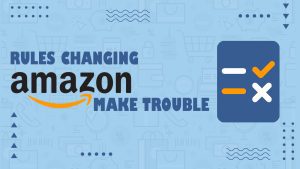Introduction
Online shopping has become a convenient and popular way of buying products and services. However, it also comes with some challenges and risks, such as finding reliable and trustworthy sellers, avoiding scams and frauds, and making informed decisions based on accurate and honest information. One of the most important sources of information that online shoppers rely on are customer reviews, which are supposed to reflect the real experiences and opinions of other buyers who have purchased the same product or service. However, not all customer reviews are genuine and trustworthy. In fact, there is a growing problem of fake reviews on online platforms, especially on Amazon, the world’s largest e-commerce site.
Fake reviews are reviews that are written by people who have not actually purchased or used the product or service, or who have been paid or incentivized to write positive or negative reviews. Fake reviews can be used to manipulate the ratings and rankings of products and services, to deceive potential buyers, to damage the reputation of competitors, or to boost the sales and profits of sellers. Fake reviews can have serious consequences for both consumers and businesses, such as wasting money and time, receiving poor quality or defective products, missing out on better alternatives, losing trust and confidence in online shopping, and harming the credibility and integrity of the online marketplace.
According to a recent study by the University of Southern California and the University of California, Los Angeles, more than 20% of the reviews on Amazon are fake or unreliable. Another study by the consumer group Which found that Amazon’s top-rated products in popular categories such as headphones, smartwatches, and fitness trackers were dominated by unknown brands with thousands of unverified reviews. Moreover, a report by the consumer watchdog The Mark-up revealed that Amazon’s own products, such as the Echo Dot, the Fire TV Stick, and the Kindle, received more favourable treatment and higher ratings than comparable products from other brands.
So, how can online shoppers identify and navigate suspicious ratings and reviews on Amazon? Here are some tips and strategies that can help you spot and avoid fake reviews and make smarter and safer online purchases:
- Check the verification status of the reviews
One of the easiest ways to filter out fake reviews is to look for the “Verified Purchase” badge that appears next to the reviews. This badge indicates that the reviewer has actually bought the product or service from Amazon and that Amazon has confirmed the purchase. However, this badge does not guarantee that the review is honest and unbiased, as some reviewers may still be influenced by external factors, such as free products, discounts, rewards, or threats. Therefore, you should also check the verification status of the reviewers themselves, which can be found on their profile pages. You can access the profile pages by clicking on the reviewer’s name or avatar. On the profile pages, you can see the reviewer’s history, activity, ranking, and badges. You can also see if the reviewer has a “Real Name” badge, which means that they have linked their Amazon account to their social media account, such as Facebook or Twitter. This badge can provide some assurance that the reviewer is a real person and not a bot or a fake account.
- Analyse the content and tone of the reviews
Another way to detect fake reviews is to examine the content and tone of the reviews. Fake reviews tend to have some common characteristics, such as:
- Being too vague, generic, or irrelevant, without providing any specific details or examples about the product or service, such as its features, functions, performance, quality, or benefits.
- Being too positive or too negative, without mentioning any pros or cons, or any balanced or objective opinions or comparisons.
- Using exaggerated or unnatural language, such as excessive praise, hype, or emotion, or using too many capital letters, exclamation marks, or emojis.
- Having spelling, grammar, or punctuation errors, or using poor or inconsistent formatting, such as different fonts, sizes, or colours.
- Repeating the same words, phrases, or sentences, or copying the product description or other reviews, either verbatim or with minor changes.
- Having mismatched or contradictory information, such as the review date, the purchase date, the product name, the product image, or the rating.
You can also use some online tools, such as Fakespot or ReviewMeta, to analyse the reviews and ratings of any product or service on Amazon. These tools use artificial intelligence and natural language processing to scan and evaluate the reviews and ratings, and provide you with an adjusted rating, a trust score, and a summary of the findings.
- Look for patterns and trends in the reviews and ratings
Another way to spot fake reviews is to look for patterns and trends in the reviews and ratings. Fake reviews tend to have some common patterns and trends, such as:
- Being clustered or concentrated in a short period of time, such as within a few days or hours, or on a specific date or time, which may indicate a coordinated or orchestrated campaign.
- Being inconsistent or disproportionate with the sales volume, popularity, or availability of the product or service, such as having too many reviews or ratings for a new or low-selling product, or having too few reviews or ratings for a high-selling or well-known product.
- Being skewed or biased towards a certain rating, such as having mostly 5-star or 1-star ratings, or having a sudden or significant change in the rating distribution, such as a spike or a drop in the average rating or the number of reviews.
You can also use some online tools, such as The Review Index or Keep, to visualize and monitor the reviews and ratings of any product or service on Amazon. These tools use graphs and charts to display and track the reviews and ratings over time, and provide you with some useful metrics and insights, such as the sentiment analysis, the feature ratings, the review quality, and the price history.
- Compare and contrast the reviews and ratings across different platforms and sources
Another way to avoid fake reviews is to compare and contrast the reviews and ratings across different platforms and sources. Fake reviews tend to be limited or exclusive to a single platform or source, such as Amazon, while genuine reviews tend to be more diverse and widespread across multiple platforms and sources, such as other e-commerce sites, social media, blogs, forums, or magazines. Therefore, you should not rely on the reviews and ratings on Amazon alone, but also seek out and verify the reviews and ratings from other platforms and sources, such as:
Other e-commerce sites, such as eBay, Walmart, Target, or Best Buy, where you can find similar or identical products or services, and compare their prices, features, specifications, availability, and customer feedback.
Social media, such as Facebook, Twitter, Instagram, or YouTube, where you can find posts, tweets, photos, videos, or live streams from other buyers, sellers, influencers, or experts, who share their opinions, experiences, or recommendations about the products or services.
Blogs, forums, or magazines, such as TechCrunch, CNET, PCMag, or Wirecutter, where you can find articles, reviews, guides, or rankings from professional or independent writers, reviewers, or editors, who provide in-depth and unbiased information, analysis, or advice about the products or services.
- Report and flag the fake reviews and ratings to Amazon
Another way to deal with fake reviews is to report and flag them to Amazon. Fake reviews are against Amazon’s policies and guidelines, and can result in penalties or sanctions for the reviewers or the sellers, such as removal of the reviews, suspension of the accounts, or legal action. Therefore, you should not ignore or tolerate the fake reviews, but rather act and notify Amazon about them.
You can report and flag the fake reviews and ratings to Amazon by following these steps:
- Go to the product or service page on Amazon, and scroll down to the customer reviews section.
- Find the review that you want to report or flag, and click on the “Report abuse” link that appears below the review.
- Select the reason why you want to report or flag the review, such as “The review is not about the product”, “The review is abusive or hateful”, or “The review is suspicious or fraudulent”.
- Click on the “Submit” button to send your report or flag to Amazon.
You can also contact Amazon’s customer service directly, either by phone, email, or chat, and provide them with the details and evidence of the fake reviews and ratings, such as the product or service name, the reviewer or seller name, the review or rating date, the review or rating content, or the screenshots or links of the reviews or ratings.
Conclusion
Fake reviews are a serious and widespread problem on online platforms, especially on Amazon, the world’s largest e-commerce site. Fake reviews can mislead and deceive online shoppers, and affect their decisions and satisfaction. Therefore, online shoppers need to be aware and vigilant of the fake reviews, and use some tips and strategies to identify and navigate them, such as checking the verification status, analysing the content and tone, looking for patterns and trends, comparing and contrasting across platforms and sources, and reporting and flagging to Amazon. By doing so, online shoppers can protect themselves and their interests, and enjoy a better and safer online shopping experience.
If you need any help with customer reviews on Amazon or further regarding Amazon, you can contact us at eStores Expert.





